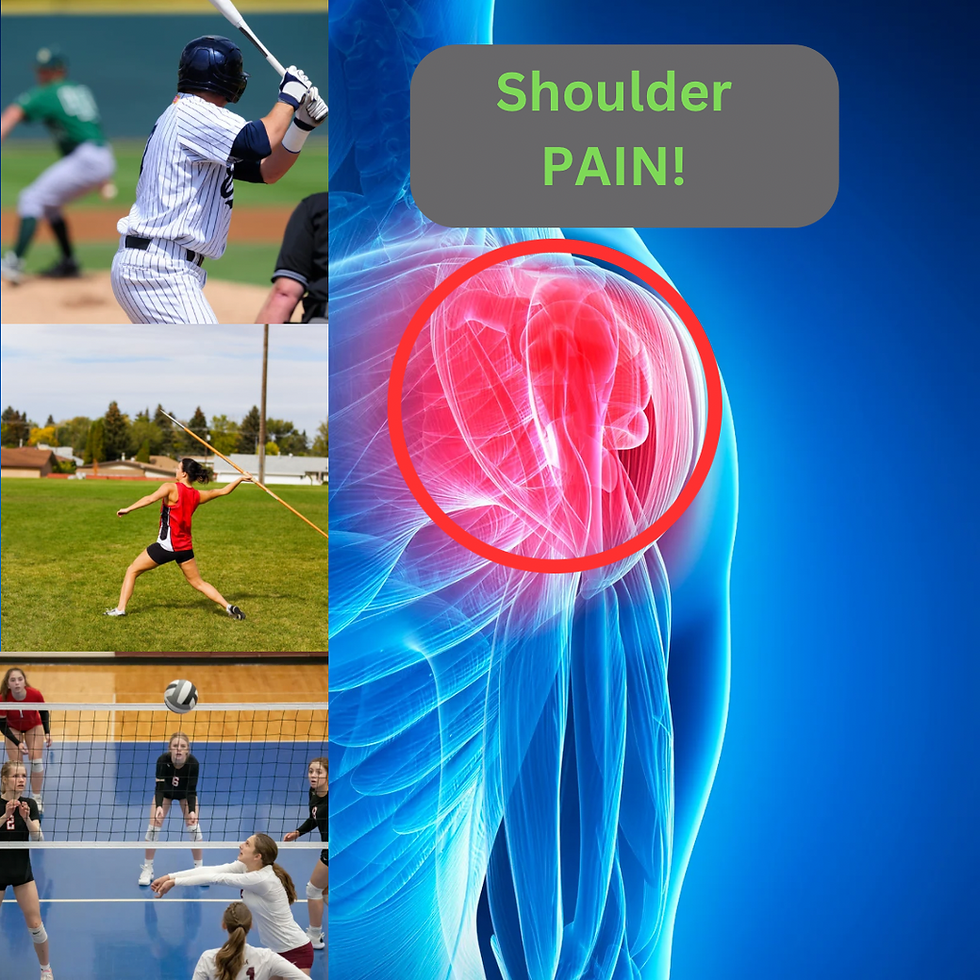Tight Hip Flexors: The Hidden Performance Killer (And How to Fix It)
- josephaohara
- Sep 30
- 4 min read
If you're an athlete in the Lower Merion area—whether you're running track at Harriton, playing volleyball at Merion Mercy, or hitting the gym to stay competitive—there's a good chance tight hip flexors are sabotaging your performance right now.
You might not even realize it. But that nagging lower back pain, reduced sprint speed, or decreased jumping power? Tight hip flexors could be the culprit.
What Are Hip Flexors and Why Do They Matter?
Your hip flexors are a group of muscles that connect your lower spine and pelvis to your thigh bone. The primary muscle, the iliopsoas, is responsible for lifting your knee toward your chest and bending at the waist.
For athletes, these muscles are critical. Every time you sprint, jump, cut, or change direction, your hip flexors are working. When they're tight and restricted, your entire kinetic chain suffers.
How Tight Hip Flexors Kill Athletic Performance
Reduced Power Output
Tight hip flexors limit your hip extension—the powerful backward movement of your leg that drives sprinting, jumping, and explosive movements. When your hips can't fully extend, you're literally leaving power on the table. Track athletes lose stride length. Basketball and volleyball players can't jump as high. Soccer players lose acceleration.
Increased Injury Risk
When hip flexors are chronically tight, your body compensates. Your lower back takes on extra stress. Your glutes stop firing properly. Your hamstrings work overtime. This compensation pattern is a recipe for strains, pulls, and chronic pain that can sideline you for weeks.
Poor Posture and Alignment
Tight hip flexors pull your pelvis into an anterior tilt, creating that "duck butt" posture. This misalignment affects everything up and down the chain—your core stability weakens, your spine curves excessively, and your movement patterns become inefficient.
Decreased Speed and Agility
Speed isn't just about leg strength—it's about range of motion. Tight hip flexors restrict your stride, slow your leg turnover, and make quick directional changes feel sluggish. If you're trying to shave seconds off your 40-yard dash or beat defenders to the ball, hip mobility is non-negotiable.
Why Do Hip Flexors Get Tight?
The modern athlete faces a perfect storm:
Excessive sitting: School, homework, driving—hours of hip flexion every day
Repetitive sport movements: Running, cycling, and kicking sports constantly engage hip flexors
Inadequate stretching: Most athletes focus on hamstrings and quads but neglect hip flexors
Weak opposing muscles: When glutes and core are weak, hip flexors compensate and tighten
How to Fix Tight Hip Flexors: A Performance-Based Approach
1. Dynamic Warm-Up (Before Every Workout)
Leg swings: Forward and back, side to side—10 reps each direction per legWalking lunges with rotation: 10 reps per leg, rotating toward the front legHigh knees: 20 yards, focusing on full hip extension on the back leg
2. Targeted Stretching (Daily)
Kneeling hip flexor stretch: Kneel on one knee, push hips forward, squeeze the glute of the kneeling leg. Hold 45-60 seconds per side.Couch stretch: Place one foot on a bench or couch behind you, kneel on that knee, and push hips forward. This deep stretch targets the rectus femoris. Hold 60 seconds per side.Pigeon pose: From a plank position, bring one knee forward and angle it out. Lower your hips toward the ground. Hold 60 seconds per side.
3. Strengthen the Opposition
Tight hip flexors often mean weak glutes and core. Balance the equation:
Glute bridges: 3 sets of 15 reps, squeezing glutes at the topSingle-leg deadlifts: 3 sets of 10 reps per leg for posterior chain strengthPlanks and dead bugs: 3 sets of 30-45 seconds for core stability
4. Foam Rolling and Mobility Work
Use a foam roller or lacrosse ball on your hip flexors, quads, and IT band for 60-90 seconds per area. Follow with active mobility drills like 90/90 hip switches and fire hydrants.
5. Movement Assessment
Sometimes you need an expert eye. A proper movement assessment can identify compensation patterns, muscle imbalances, and mobility restrictions you can't see yourself. This is where working with a certified trainer makes all the difference.
The Bottom Line
Tight hip flexors aren't just uncomfortable—they're a performance limiter. Whether you're a student athlete trying to earn a college scholarship, a weekend warrior staying competitive, or an adult looking to move better and feel stronger, addressing hip mobility is essential.
The good news? With consistent stretching, targeted strengthening, and proper movement patterns, you can restore hip function and unlock the power, speed, and injury resistance your sport demands.
Don't let tight hips hold you back. Take control of your mobility, and watch your performance soar.
Ready to move better and perform stronger? At O'Hara Fitness, we specialize in sport-specific training that addresses the root causes of performance limitations—including tight hip flexors. Our private gym in Narberth provides one-on-one attention to help athletes of all levels build strength, prevent injuries, and dominate their sport.
Contact us today to schedule your movement assessment and start training smarter.

#LowerMerionPA #NarberthPA #MainLinePA #HarritonHS #LowerMerionHS #MerionMercy #PhillyAthletes #MainLineFitness #SportsPerformance #AthleticTraining #HipMobility #InjuryPrevention #StrengthAndConditioning #YouthAthletes #TrackAndField #VolleyballTraining #PersonalTrainingPA #OHaraFitness #MoveWell #TrainSmart








Comments